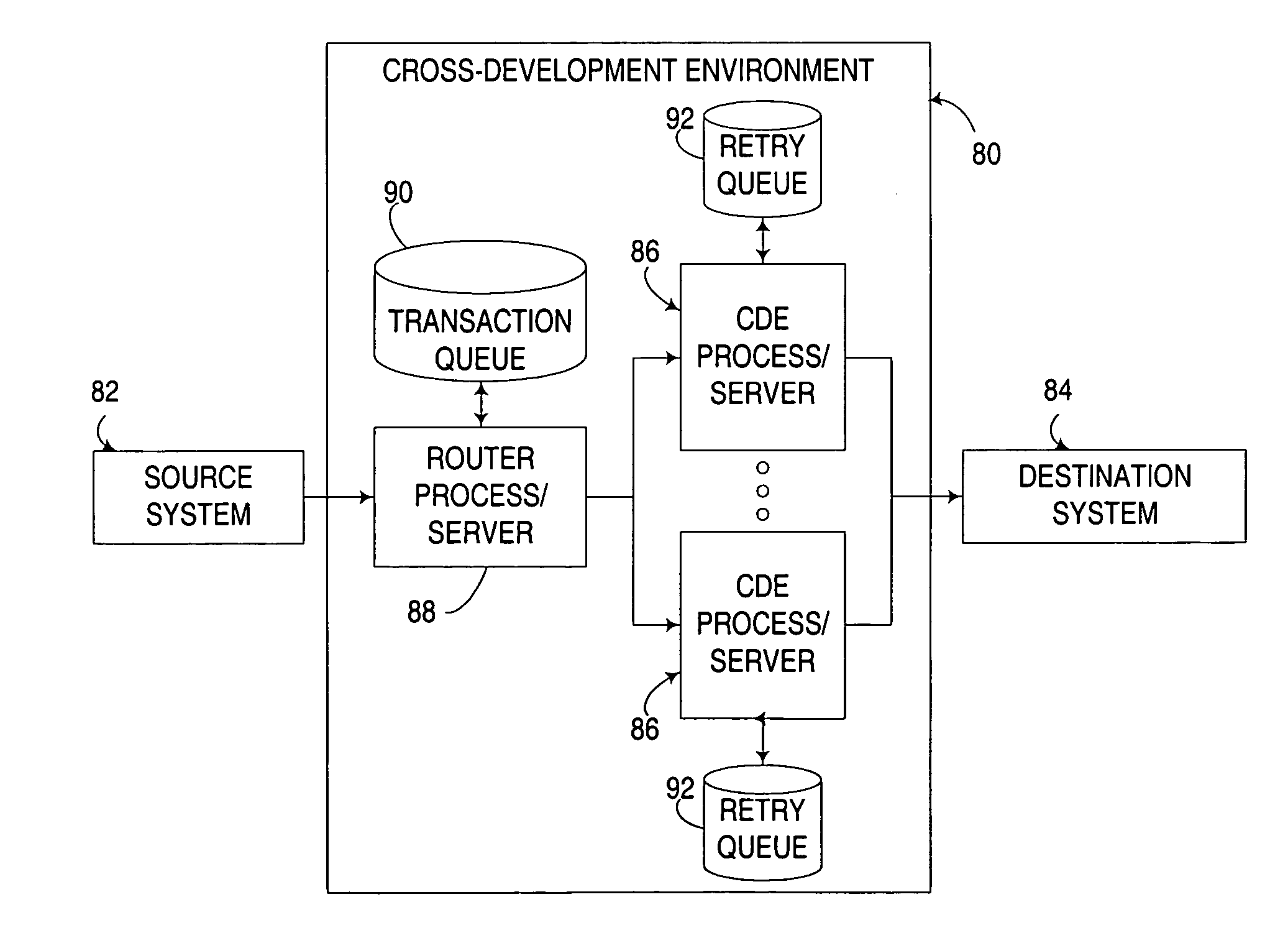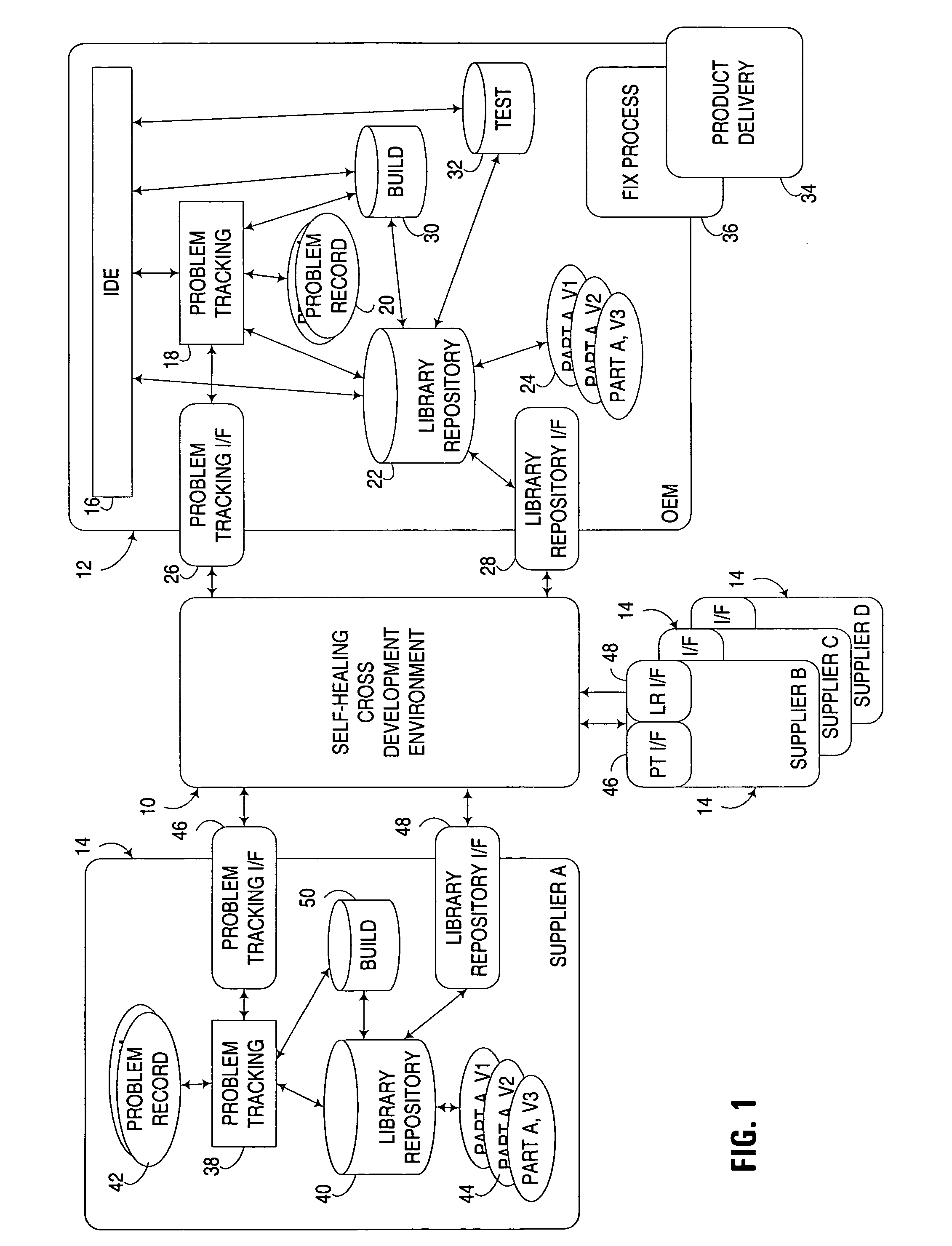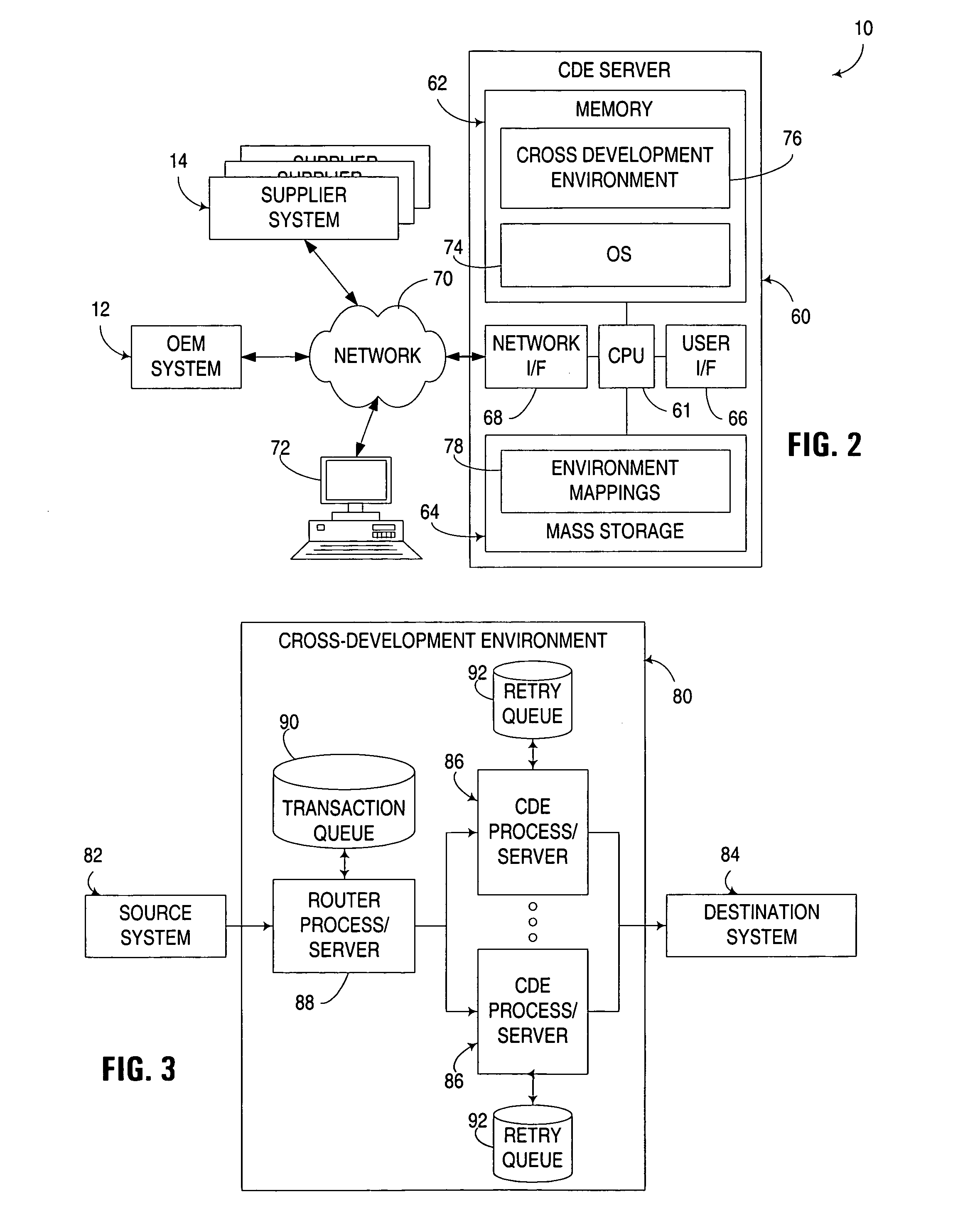Self-healing cross development environment
a cross-development environment and self-healing technology, applied in the field of computer and computer software, can solve the problems of increasing complexity and sophistication of software development, increasing complexity and integration into other products, and not being particularly well equipped to handle software development, so as to minimize interoperability problems and maximize availability
- Summary
- Abstract
- Description
- Claims
- Application Information
AI Technical Summary
Benefits of technology
Problems solved by technology
Method used
Image
Examples
Embodiment Construction
[0029] The embodiments discussed hereinafter implement self-healing functionality in a cross development environment to maximize the availability and minimize interoperability problems between disparate software development environments that are coupled to one another via such an environment. As will be described in greater detail below, availability is maximized, and interoperability problems are minimized through a number of different techniques. One such technique is that of dynamically modifying mapping data structures in a cross development environment to effectively propagate changes made to one software development environment to other such environments. Another such technique is that of implementing wildcarding support in a mapping data structure. Yet another such technique is that of providing high availability support for a cross development environment, and / or to provide retry capability in a cross development environment to guard against the possibility of a destination ...
PUM
 Login to View More
Login to View More Abstract
Description
Claims
Application Information
 Login to View More
Login to View More - R&D
- Intellectual Property
- Life Sciences
- Materials
- Tech Scout
- Unparalleled Data Quality
- Higher Quality Content
- 60% Fewer Hallucinations
Browse by: Latest US Patents, China's latest patents, Technical Efficacy Thesaurus, Application Domain, Technology Topic, Popular Technical Reports.
© 2025 PatSnap. All rights reserved.Legal|Privacy policy|Modern Slavery Act Transparency Statement|Sitemap|About US| Contact US: help@patsnap.com



